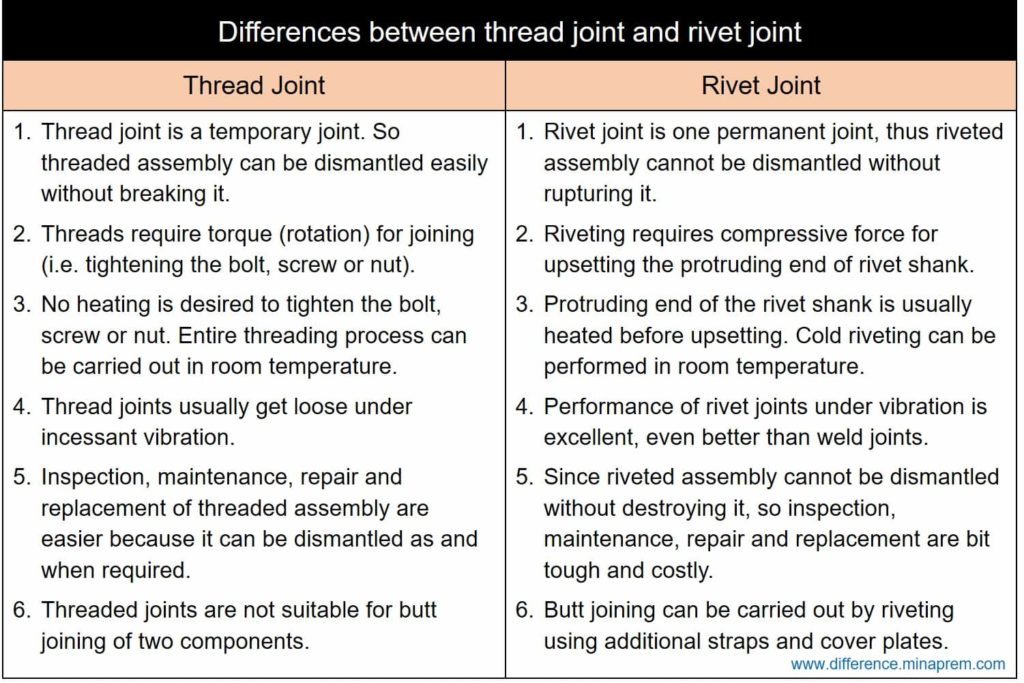Joining is one of the manufacturing processes by which two or more components can be assembled together to unify them. There exists a wide variety of such joining processes to fulfill the need of assembling various components in several ways. Broadly, these processes can be classified into two categories—permanent joining and temporary joining. A permanent joint is one where the jointed components cannot be dismantled easily without rupturing them, while a temporary joint allows easy dismantling of jointed components without breaking them. Coupling, weld joint, rivet joint, etc. are examples of permanent joints; while, cotter joints, knuckle joints, fasteners, etc. are temporary joints. Each of these two types of joining methods offer several benefits over the other one. For example, permanent joints offer high strength and load carrying capacity, but possess challenges during inspection. A temporary joint is comparatively easier to inspect. It is also suitable for interchangeable components.
In rivet joining, two or more solid components are held together (sometimes along with additional strap plates) and several through holes are drilled on them in pre-defined locations. Rivets are then inserted within these through holes the protruding end of the each rivet (called point) is hammered to make a closing head. Components are then permanently held together by means of the tensile force (hot riveting) or compressive force (cold riveting) developed within the rivets. Being a permanent joint, rivet joint offers a sound and leak-proof joining. Like riveting, thread joining also requires holes on the components to be joined for the insertion of the bolt or screw. However, here the components are held together by means of wedge action develops within the threads. Being a temporary joint, thread joined parts can be easily separated as and when required, especially for maintenance and inspection purposes. Various similarities and differences between threaded joints and rivet joints are presented below in table form.
Similarities between thread joint and rivet joint
- Both thread joint and rivet joint are categorized as mechanical joining techniques as no chemical reaction takes place during joining. Adhesives including epoxy resin are the chemical joining process.
- Both can produce sound joint, if designed and carried out properly.
- Both of them require pre-drilled holes on the components for joining purposes. Such holes significantly reduce strength of the components owing to the stress concentration and reduction in cross sectional area. This may lead to reduced load carrying capacity of the assembled structures.
- Both are intermittent type joining techniques. On the contrary, welding and adhesive joints are considered as continuous joints.
- Both these joints leave behind protruded parts (bolt head or rivet head), which hamper appearance and restrict sliding motion on the surface. Sometimes it also limits the extent of application of these joining processes.
- Neither thread joint nor rivet joint alters metallurgical properties of components (welding can change the metallurgical or physical properties of the components).
Differences between thread joint and rivet joint
| Thread Joint | Rivet Joint |
|---|---|
| Thread joint is a temporary joint. So threaded assembly can be dismantled easily without breaking it. | Rivet joint is one permanent joint, thus riveted assembly cannot be dismantled without rupturing it. |
| Threads require torque (rotation) for joining (i.e. tightening the bolt, screw or nut). | Riveting requires compressive force for joining or upsetting the protruding portion of the rivet shank. |
| No heating is desired to tighten the bolt, screw or nut. Entire threading process can be carried out in room temperature. | In hot riveting method, the protruding end of the rivet shank is heated before applying compressive force. This reduces the magnitude of compressive pressure requirement. However, cold riveting can be performed in room temperature. |
| Thread joints usually get loose under incessant vibration. | Performance of rivet joints under vibration is excellent, even better than weld joints. |
| Thread joint may not necessarily be leak proof. | Rivet joints are usually leak proof if it is designed properly. |
| Inspection, maintenance, repair and replacement of threaded assembly are easier because it can be dismantled as and when required. | Since riveted assembly cannot be dismantled without destroying it, so inspection, maintenance, repair and replacement are bit tough and costly. |
| Threaded joints are not suitable for butt joining of two components. | Butt joining can be carried out by riveting using additional straps and cover plates. |

References
- Introduction to Machine Design by V. B. Bhandari (McGraw Hill Education India Private Limited).
- A Textbook of Machine Design by R. S. Khurmi and J. K. Gupta (S. Chand).
- Theory of Machines by R. S. Khurmi and J. K. Gupta (S. Chand).
- Machine Design: Fundamentals and Applications by P. C. Gope (PHI Learning Private Limited).